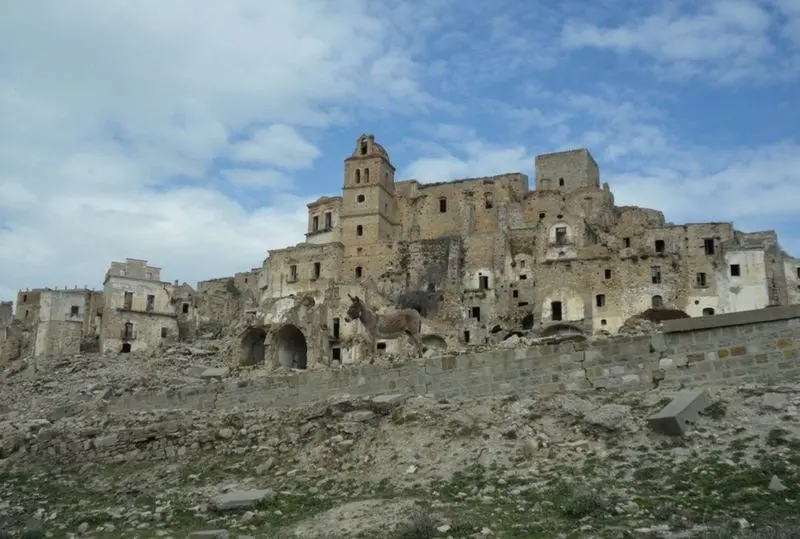Don’t stop at Eboli: Basilicata
The winning film in terms of cinema tourism in recent years must be Basilicata coast to coast, directorial debut from actor Rocco Papaleo and his declaration of love, and also belief, in a region, his region, that he would say exists “a little like the concept of God, you either believe in it or you don’t”. The nomadic itinerary of his caravan of musicians offers the invitation to discover it on foot, so as to catch every ounce of beauty. The backdrop to their slow passage, seen through a lens of carefree levity, is a Basilicata of valleys, mountains, borghi and ghost towns (Craco being the most famous), water courses, reservoirs, stories still unopened. Maratea, Lauria, Moliterno, Tramutola, Grumento Nova, Aliano (setting for the exile of Carlo Levi whose badlands rival those in Turkey), Viggiano, Tursi, Policoro and Scanzano Jonico: the map is completed.
There is, of course, another way to explore: by air. The two villages of Pietrapertosa and Castelmezzano are joined by the Volo dell’Angelo, a 1,000m steel cable zipline which reaches close to the sky, displays the Lucanian Dolomites and dissolves all fears. Director Massimo Gaudioso links these two borghi to produce Pietramezzana, or An almost perfect town, from the beehive of his imagination. To bid our farewells to Basilicata, we head to another territory, that of memory, as the Carducci-like title, Of Lost Love, suggests. In Irsina and Ferrandina, Michele Placido shot the story of Liliana Rossi, a young Communist activist fighting for female emancipation who died at just 24 in the director’s home town: Ascoli Satriano in Apulia. He chose Basilicata because: “Irsina represents the state of grace that the populations of Lucania somehow conserve”. And may that grace be with you.



